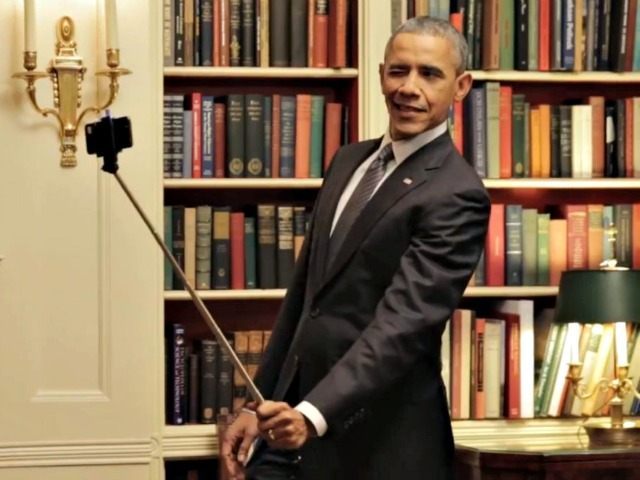In a 2013 New York Times piece about the Obama campaign’s use of Facebook, staffers on the former President’s 2012 campaign revealed that their vast data gathering operation, which trawled the Facebook feeds of supporters’ friends without their knowledge, triggered the social network’s security systems.
The New York Times piece, like much of the media coverage surrounding the Obama campaign’s use of Facebook, is nowhere near the outraged, panicked tone that characterizes reports on President Trump’s successful use of the platform. But the revelations about the extent of Obama’s digital operation reveal a campaign that may have harvested more data on American citizens than Trump’s campaign, which was operating at a time when Facebook had tightened their policies around data.
The New York Times interviewed a number of former Obama staffers, including coder Will St. Clair, who worked on the Facebook operation. St. Clair admitted that their use of Facebook data triggered the platform’s alarms:
The campaign’s exhaustive use of Facebook triggered the site’s internal safeguards. “It was more like we blew through an alarm that their engineers hadn’t planned for or knew about,” said St. Clair, who had been working at a small firm in Chicago and joined the campaign at the suggestion of a friend. “They’d sigh and say, ‘You can do this as long as you stop doing it on Nov. 7.’ ” (Facebook officials say warning bells go off when the site sees large amounts of unusual activity, but in each case the company was satisfied the campaign was not violating its privacy and data standards.)
We previously reported on explosive comments made Obama’s former Director of Media Analytics, Carol Davidsen, who said that Facebook representatives visited the campaign offices after the election, where they admitted that “they allowed us to do things they wouldn’t have allowed someone else to do because they were on [Obama’s] side.”
In the New York Times piece, the paper acknowledges that Obama’s data operation was shrouded in secrecy, in part because voters might be “uncomfortable” if they knew the amount of data that was being collected about their personal lives.
To understand how it works, you must first understand the vast technological engine that powered the campaign but remained largely out of view of the public and the press. Messina, the campaign manager, often boasted about how the Obama 2012 effort would be “the most data-driven campaign ever.” But what that truly meant — the extent to which the campaign used the newest tech tools to look into people’s lives and the sheer amount of personal data its vast servers were crunching — remained largely shrouded. The secrecy around the operation was partly because the president’s strategists wanted to maintain their competitive edge. But it was also no doubt because they worried that practices like “data mining” and “analytics” could make voters uncomfortable.
Obama’s campaign asked Facebook supporters who accessed their app to give them permission to crawl the newsfeeds and walls of their Facebook friends (the friends were not able to know or consent to this, of course).
St. Clair even joked about trawling through the Facebook feeds of “ex-girlfriends” of Obama supporters.
Once permission was granted, the campaign had access to millions of names and faces they could match against their lists of persuadable voters, potential donors, unregistered voters and so on. “It would take us 5 to 10 seconds to get a friends list and match it against the voter list,” St. Clair said. They found matches about 50 percent of the time, he said. But the campaign’s ultimate goal was to deputize the closest Obama-supporting friends of voters who were wavering in their affections for the president. “We would grab the top 50 you were most active with and then crawl their wall” to figure out who were most likely to be their real life friends, not just casual Facebook acquaintances. St. Clair, a former high school marching-band member who now wears a leather Diesel jacket, explained: “We asked to see photos but really we were looking for who were tagged in photos with you, which was a really great way to dredge up old college friends — and ex-girlfriends,” he said.
Read the full piece at the New York Times.
Allum Bokhari is the senior technology correspondent at Breitbart News. You can follow him on Twitter, Gab.ai and add him on Facebook. Email tips and suggestions to allumbokhari@protonmail.com.

COMMENTS
Please let us know if you're having issues with commenting.